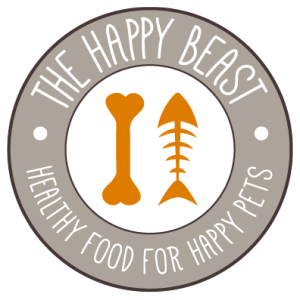Old dogs are my favorite. The sweet, gentle guys, the grouchy old ladies, and the 12 year olds who still think they’re puppies. Senior dogs just make my heart melt! As dogs get older, we need to remember to address their changing needs. Let’s look at nutrition, supplements, and lifestyle for senior dogs.
NUTRITION
Senior dogs will require slightly different nutrition plans depending on their individual health concerns (the most common being arthritis, diabetes, cancer, kidney disease and obesity).
Minimally-processed food: As the digestive system ages, it becomes even more important to feed highly digestible foods. Minimally-processed food (raw, dehydrated, freeze-dried or air-dried) are more digestible than kibble.*
If you prefer to feed kibble, consider incorporating some type of less-processed food. Dehydrated and freeze-dried foods (like Sojo’s) mix well with kibble, or try adding ground meat, eggs, cottage cheese or low-sodium broth.
High-Quality Protein: Unless your dog has an advanced kidney disease, do not restrict the amount of protein in his diet. Senior dogs require protein to convert into energy and to maintain muscle mass. Avoid low-quality protein sources like animal by-products and plant-based proteins (soy, corn, etc.) which tax the kidneys. Instead, choose a dog food that uses whole muscle and organ cuts.
Healthy Weight: Many older animals are overweight due to slowed metabolism and reduced activity. Others may have a hard time keeping weight on, which is often a result of illness. There are many underlying causes for weight-related issues. Be sure to talk with your vet to better understand these. Carefully monitor your dogs calorie-intake and periodically assess your dogs waistline to make sure she’s staying on track!
SUPPLEMENTS
Fish Oil: The Omega 3s found in fish oil reduce inflammation and support brain health. Try Nordic Naturals, InClover’s Glow, or a treat made with fish like The Honest Kitchen’s Beams.
Digestive Enzymes: Enzymes help the digestive system break down food so nutrients may be more easily absorbed and utilized by the body. Dogs with cancer, pancreatitis, kidney and immune disorders in particular will benefit from enzymes. One way to give your dog a good daily dose is to include green tripe in her meals. Try K9 Natural’s raw or Tripett’s cans.
Joint Support: Supplements containing glucosamine and chondroitin reduce joint pain and increase joint mobility. Check out InClover’s Connectin and Nupro.
EXERCISE: Physical & Mental
The less we move, the harder it is to get moving! Although senior dogs may not run and jump and hike like they used to, it’s still important for them to get regular exercise. Daily walks (even short ones) help to maintain muscle tone and joint mobility. Do you have time for two five-minute walks each day? Even to the mailbox and back can make a significant improvement in the way your senior pet feels. Swimming provides non-weight bearing exercise suitable for dogs with arthritis and joint pain.
Manually stretch and mobilize your dog’s legs, hips, neck and back. Use gentle pressure on any aching joints. Connect with a rehab center or canine massage therapist to learn the basics. (We like Canine Rehab and Conditioning Group in Broomfield and Certified Canine Massage Provider, Mary Kennedy.)
Old dogs can learn new tricks and aging brains benefit from mental stimulation too. Teach your dog a new command or give her a treat-dispensing puzzle toy like Busy Buddies to keep her brain sharp!
Stop by the store if you’d like to talk more – and don’t forget that hip & joint supplements are 10% off November 17th-23rd!
CONTACT US
HOURS
Mon – Fri: 10am – 7pm
Sat: 9am – 6pm
Sun: 10am – 5pm
© The Happy Beast
LOCATION
1230 Etna Dr.
Lafayette, CO 80026
(Get Directions)
Located just off South Boulder Rd. behind Elevations Credit Union and Stan’s Automotive. You can turn onto either Etna or Cimarron and look for the dark blue building.
